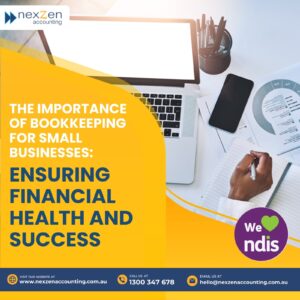The Australian government recently released new guidelines for company directors. If you’re a little confused or overwhelmed by all the recent changes, please don’t worry. For the most part, your business may continue as usual. We can help you with your director identification. In this guide, we’ll explain what a director ID is, whether you need one, and how to get one. If you run into any issues along the way, please let us know. For example, you may have trouble deciding who your director should be or whether you need multiple directors. You may also have questions about the director ID application process. nexZen is here to assist with all these matters and more. Simply give us a call, and we’ll relieve your worries.
What is director identification?
Director Identification is a way of verifying your ID with Australian Business Registry Services (ABRS). This unique 15-digit identity code is required for all company directors, and all Australian companies must have at least one director. If you crowd-source funding, you must have a minimum of two directors, and every public company must have at least three directors. For example, if you own a small proprietary company, you may choose to direct the company yourself or hire someone else for the task. Either way, the director must register with the ABRS.
Who needs to apply for a director ID?
Every director needs to apply for a director ID. We know that may be frustrating when you already have so many other tasks to perform, but we can help you with the process. It shouldn’t take long, and we’re happy to answer any questions and even walk you through the steps if needed. It’s most important that your company remains fully compliant with all Australian laws.
You’re a director whether you’re the named director of the company or you’re simply performing the tasks a director normally performs. The ABRS doesn’t approve of officers who name other people as “dummy” directors then direct the company themselves. They penalize you if you take this route, so it’s never a great idea.
The good news is that you only need to apply for a director ID once. Even if you direct multiple companies or change companies, your director ID remains valid.
When to Apply for a Director ID
If you’re already acting as the director of your company, you should apply ASAP. Recent laws set specific dates for those already acting as director:
- If you became a director on or before 31 October 2021, you must apply by 30 November 2022.
- If you become a director between 1 November 21 and 4 April 2022, you must apply within 28 days of your appointment to the role.
- If you become a director on 5 April 2022 or later, you must apply for your director ID before your appointment to the role.
How to Apply for a Director ID
- First, gather your documents to make the application process easier for yourself. You’ll be asked for certain information, so keep these forms handy if possible.
You’ll need your:
- Tax File Number (TFN)
- Residential address (the one you filed with the ATO)
- Two documents that help verify your identity.
Your verification documents may include:
- Bank account information
- ATO assessment notice
- Super account information
- Dividend statement
- Centrelink or PAYG payment summary
- Next, you’ll need a myGovID. You may already have one. If not, you may set yours up here with an email address and supporting identity documents. Note, your myGovID must be either Standard or Strong strength. Basic strength doesn’t mean the requirements for a director ID.
- Finally, you can apply for a director ID here. Because you’ve already done the hard part (gathering your documents and setting up your myGovID), the actual application should only take a few minutes. Simply log in with your myGovID and follow the steps.
Getting a Director ID Without myGovID
If you have trouble setting up your myGovID, you can still apply for a director ID, but the process takes a little longer. You’ll need to apply by phone with your documents nearby. You can also download the paper application and mail it in, but you’ll need certified copies of your documents to send with the application. We don’t recommend the paper method unless you truly have no other option. If you run into a situation like this one, please let us know. We may have a way to resolve the issue that doesn’t require a phone or paper application.
How nexZen Can Help
If you’re frustrated by the new director ID laws, you’re not alone. Many businesses are scrambling to make sure they’re following the latest guidelines, and small setbacks are common.
However, compliance is incredibly important for every business. Thankfully, the director ID process isn’t too complicated—once you’ve assigned a director, of course. The problem is that many small business owners don’t have an official director. You may be acting as director yourself but wish to assign that role to someone else. Or, you may have several people working together as directors. In that case, which person needs a director ID?
No matter what situation you’re facing, we can help. nexZen’s primary goal is to assist our clients with all the complicated business decisions while helping them succeed. We review your entire situation before we make recommendations. We’ll consider your goals for yourself and your business, your financial situation, your future finances, and other factors. Though we always help our clients remain compliant with Australian laws, we also want you to feel comfortable with the decisions you make for your business. Do you want freedom and control of your business? We want that for you, too. Reach out to nexZen now to make it happen.










